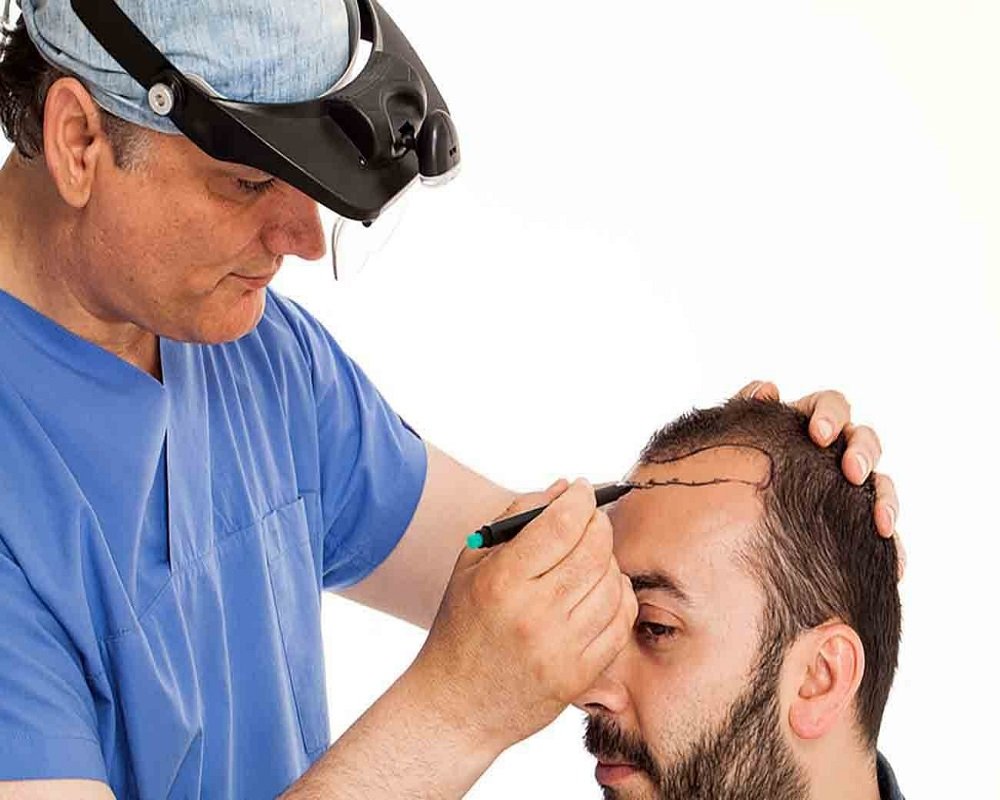Hair transplantation in Turkey is a target for several countries in Asia and Europe, because it is successful and with low costs compared to other countries. But before going through this experience, you should know all the information related to this topic through our article
The issue of baldness still causes discomfort for many men and women in times when hair loss treatment has become useless, especially when its causes are genetic, pathological or result from psychological stress. In such cases, it can only be treated with surgeries using advanced techniques. The motto ‘We Grow Your Hair to Help You Regain Confidence’ has recently spread in Turkey, promoting that these operations are the ultimate solution for this problem. Hair transplantation in Turkey is a target for several countries in Asia and Europe, because it is successful and with low costs compared to other countries.
But before going through this experience, you should know all the information related to this topic through our article:
Hair transplantation in Turkey:
Definition: it is about transplanting the hair follicles that are carefully selected from the scalp in the hair dense areas, such as the backside of the head and the sides called donor areas, in order to be placed in areas where baldness is frequent, especially in the front side which is full of surgical holes called the receiving areas.
This process is carried out under the supervision of a specialized doctor “plastic surgeon” in cosmetic hospitals or clinics. Annually, about 2 million tourists go for such operations because hair transplant treatments in Turkey are characterized by low costs and competitive charges in addition to the high quality available in terms of using scientific methods that help reduce the risks and complications.
Hair transplantation techniques in Turkey:
It is carried out through a set of techniques, each of which has its pros and cons:
1) Follicular Unit Transplantation Technique (FUT):
It is considered one of the traditional techniques that are still used until now, and it is based on using a strip of tissue to take hair from the scalp and sides of the head. When it is loaded with hair follicles, the follicular units are dissected from the strip and transplanted into the receiving area.
This technique has significant surgical side effects in addition to significant pain and the scars due to the presence of stitches in the donor area if the hair is cut very short.
Stitches and cuts also cause nerve damage and infection.
In addition to the difficulty of using it for eyebrow transplantation, as well as for the cultivation of chin hair and eyelashes.
2) Follicular Unit Extraction Transplantation (FUE) Technique:
It depends on random selection of the hair units from the donor area and using a tool with a round head. Through this technique, the tool is wrapped around the hair follicle to extract it with some tissues and transplant it without any scars or wounds. The process is painless and the recovery takes a short time.
3) Nano Follicle Hair Transplantation (FUE) Technique:
It is a thin, hollow needle with a diameter of 0.6-0.8 mm connected to a small motor. The follicles (grafts) are collected from dense hair areas (with hair consisting of 3 to 4 or 5 hairs in a single pore), especially healthy follicular units from the scalp, and moving it to the receiving area and placing it inside the holes prepared for it. There is no need to make an incision. The results of this process are positive, not only in hair transplantation, but also in transplanting beard hair, mustaches and eyelashes.
4) The Sapphire Hair Transplantation Technique:
This technique is very accurate as it is performed by a specialist doctor because it includes using the blades of the sapphire stone to perform the operation. The success of this process is ascribed the doctor’s experience in using the medical tool because it has a significant impact on the angle, density and direction of new hair growth. One of the most significant conditions for the success of the operation depends on the method of opening the receiving holes to achieve a successful hair transplant.
5) Choi Hair Transplant Implanter Pen Technique:
It is performed using a precisely designed structure similar to a DHI pencil that gives the chance to perform easy hair and beard transplants. The hair follicles (or the grafts) are transferred from the donor area to the receiving area through a single procedure without the need to open channels or holes separately.
6) Robotic Hair Transplant Technique:
This process is a technique where licensed robots are only used to extract follicles exclusively from the hair of patients with dark and straight hair, while those with dark hair have different shades of hair color and weak hair structure.
7) Stem Cell Hair Transplant Technique:
It is also considered a cosmetic operation and is also a regeneration of hair growth in the scalp by using stem cells present in the body, but this process needs more researches which are not enough so far.
Types of hair transplant:
In the beginning, and before undergoing any surgery, it is important to undergo a set of tests and analyses, and then choose the suitable type:
Hair transplantation with FUE technique: it is done through shaving the patient’s hair, then cleansing the scalp, and then extracting and transplanting the follicles.
Hair transplantation with FUT technique: it is done by taking strips of hair from the scalp at the back and transplanting them in the front. The number of follicles is between 1500 and 2000 in one session, and it is initially done by anesthesia, then removing strips of 50 follicles, and then cutting it to enclose two follicles. After that, the donor area is sutured, finally transplanted into the updated holes.
Hair transplantation through the Fuss technique: first, the patient is anesthetized, then the strips are taken with a length of 15 cm, and the tape is also divided into 1000 pieces. At last, they are distributed to the target area where the operation is conducted. The process takes about 6 hours.
Hair transplantation for women and men:
For men: besides the fact that hair transplant operations are very important for the beautiful appearance, it is as important for men as for women, since the rate of baldness in men from 21 years and above is about 90%. Thus, the most common operations in Turkey are cone to men, such as head hair, chin hair and eyebrows hair transplantations.
For women: on the other hand, these operations are not as common as they are for men. Women resort to these operations in order to improve the condition of their hair and also to have an attractive look, especially because women could be psychologically affected in a negative way. Other reasons could be the presence of diseases such as alopecia, genetic hair loss, eyebrow transplantation, and eyelashes.
Stages of hair transplantation in Turkey:
1) It is very important to consult a doctor specialized in hair transplantation.
2) It is also necessary to conduct a set of analyses and research for the patient.
3) After that, the sterilization and preparation for the operation comes.
4) It is also very important to determine the lines of hair transplantation and the direction of growth.
5) Extracting the follicles and then opening the channels or holes before transplantation.
6) Finally covering the wound and treating the operation area.
Hair transplant results in Turkey:
An individual needs between 9 months to a year to see the results of the successful operation ranging between 60% to 80% and up to 100% success in two years in case the patient follows the instructions, starting from not touching the follicles after the operation, as well as washing the operation area in the correct way and the good choice of operation center.
Risks of hair transplantation in Turkey:
• Bleeding
• Post-operative infection.
• Swelling of the scalp.
• Bruising around the eyes.
• Numbness or lack of sensation in the treated areas.
• Inflammation of treated hair follicles.
Hair transplant costs in Turkey:
In conclusion, the costs of hair transplantation in Turkey vary according to the specialist doctor and his experience, the quality of the treatment center in terms of modern tools and equipment, in addition to the level of desired results after the operation. At the end, the costs of hair transplantation in Turkey are much lower than in other Asian and European countries.



